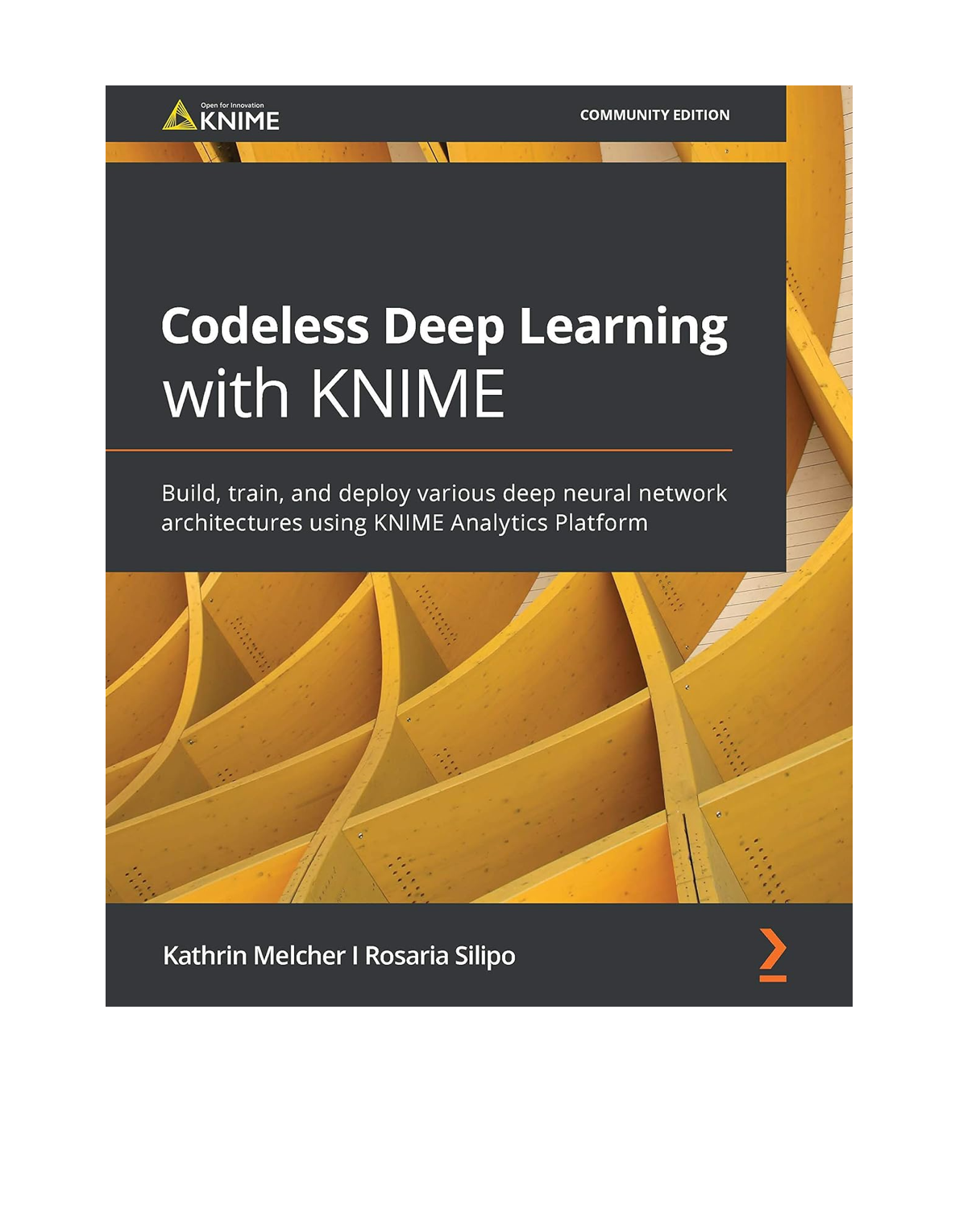Codeless Deep Learning with KNIME
Build, train, and execute various deep neural network architectures using KNIME.

What you'll learn
The book begins with an easy introduction to KNIME Analytics Platform, covering traditional feed-forward neural networks, and then shows you how to use a backpropagation algorithm with the help of practical examples. You’ll also learn how to build simple and more complex neural networks within KNIME Analytics Platform, without using a single line of code. You will start with a simple feed-forward network to solve a simple classification problem on a small dataset. Having covered the basic concepts, you’ll move on to prepare data accordingly; apply best practices to avoid overfitting; and build, train, test, and deploy more complex networks such as autoencoders, recurrent neural networks (RNNs), long short-term memory (LSTM), and convolutional neural networks (CNNs). In the concluding chapters, you’ll explore practical and creative solutions for solving real-world data problems.
By the end of the book, you’ll have learned how to build a number of different neural architectures and will be able to train, test, and deploy the network.
A free copy of chapter one is available here for download.
Purchase on AmazonBy the end of the book, you’ll have learned how to build a number of different neural architectures and will be able to train, test, and deploy the network.
A free copy of chapter one is available here for download.